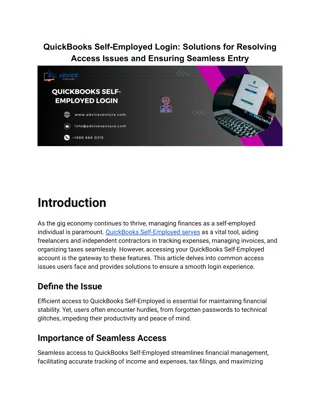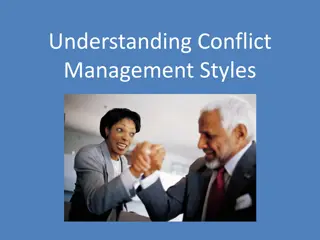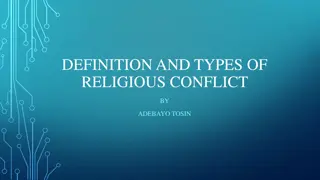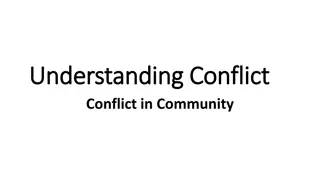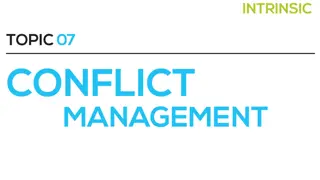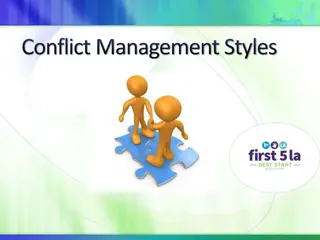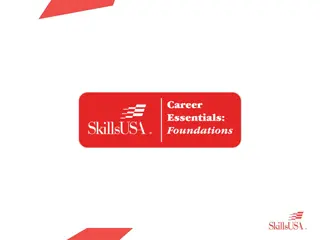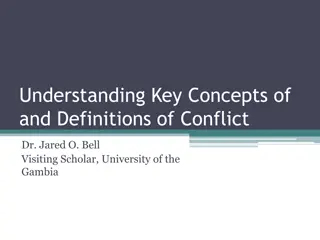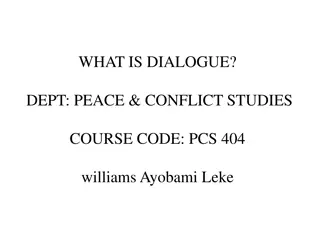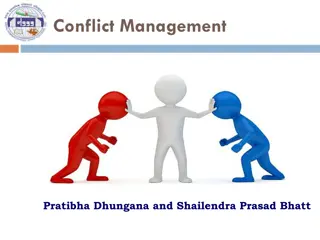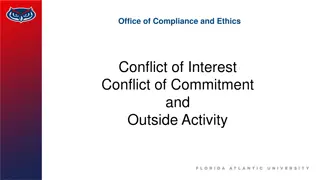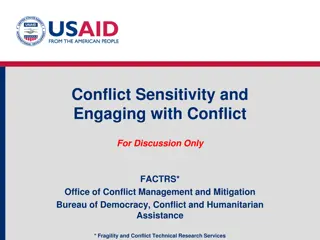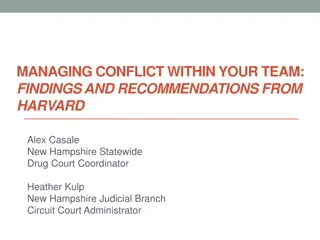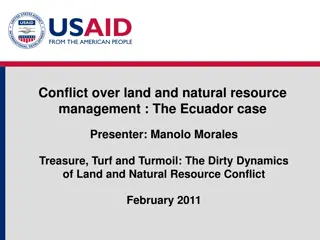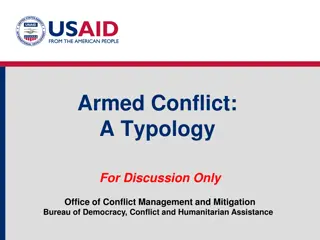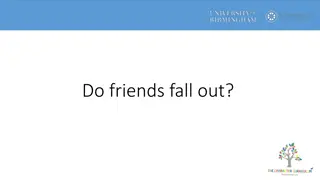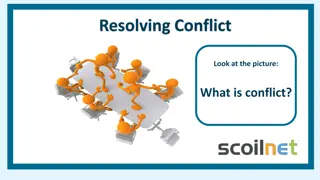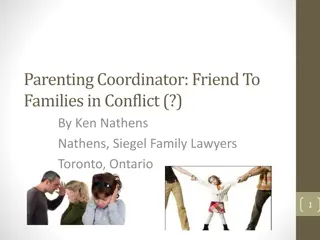Understanding Conflict: A Lesson in Resolving Differences
Conflict is a natural part of human interactions, arising from opposing ideas and actions. This lesson delves into the definition, causes, types, and management of conflicts. Emphasizing conflict as an opportunity for learning and understanding, the aim is to promote harmonious coexistence despite differences.
- Conflict Resolution
- Understanding Differences
- Learning Opportunity
- Human Interactions
- Conflict Management
Download Presentation

Please find below an Image/Link to download the presentation.
The content on the website is provided AS IS for your information and personal use only. It may not be sold, licensed, or shared on other websites without obtaining consent from the author. Download presentation by click this link. If you encounter any issues during the download, it is possible that the publisher has removed the file from their server.
E N D
Presentation Transcript
Teachers Introduction Md. Eunus Ali Lecturer in English Syedpur Bazar Fazil Madrasah Nabigonj, Habigonj. Mob: 01720075156 Email: eunusaf76@gmail.com
TodaysLesson What Is Conflict? Total Students :37 Present Students : Absent Students : Date : English 1st Paper Class: xii Unit: 12 Lesson: 2
Learning Outcomes At the end of the SS will be able to ---------- Know definition of conflict Know causes of conflict Know type of conflict Know some words meanings
Conflict can be described as a disagreement among groups or individuals characterized by antagonism or hostility. Conflict usually fueled by the opposition of one party to another to reach definite objective. The elements involved in the conflict have varied sets of principles and values
Conflict pertains to the opposing ideas and actions of different entities, resulting in an antagonism state. We have our own opinions, ideas and sets of beliefs, ways of looking at things. We act according to what we think is proper. Conflict may involve individuals, groups of people or a struggle within our own selves. Consequently, conflict influences our actions and decisions in one way to another.
Conflict comes naturally. The clashing of thoughts and ideas is a part of the human experience. However, conflict can be destructive if left uncon- trolled. It shouldn t be see only cause negative things to transpire. It is a way of meaningful realization to the individuals involved.
Conflict can seen as an opportunity for learning and understanding our differences. We can live harmoniously despite conflict as long as we know how to responsibly manage these struggles
Causes and types of conflict. According to American psychologist, conflicts are of 3 types arising out of 3 different causes:
a. Economic Conflict: Resources are limited, and so groups of individuals come into conflict with each other to possess as much of these resources as possible, thus bring forth hostile behaviors among those involved.
Value Conflict: it is concerned with the varied preferences and ideologies that people have as their principles. Conflict driven by this factor are demonstrated in wars wherein separate parties have their separate sets of beliefs that they assert in an aggressive manner.
Power Conflict : it occurs when the parties involved intend to maximize what influence they have in the social setting. Such a situation can happen among the individuals. groups or nations.
Classification of conflicts Conflicts are classified into four following types:
Interpersonal conflict: this type of conflict refers to a conflict between two individuals. This occurs typically because of differences among people. Apparently, it is a natural occurrence which can eventually help in personal growth of developing our relationship with others
Intrapersonal Conflict: it occurs within individuals. The experience takes place in the person s mind. Hence it is a type of conflict that is psychological involving the individual s thoughts, values, principles and emotions.
Intragroup Conflict: it is a type of conflict that happens among individuals within a team. It arises from interpersonal disagreements in views and ideas. Within a team, conflict can be helpful in coming up with decision which will eventually allow the members to reach their objectives as a team.
Intergroup Conflict: it takes place when a misunders- tanding arises among different teams with an orga- nization. This is due to the varied sets of goals and interests of this deferent groups. In addition, completion also contributes to intergroup conflict
vocabulary Disagreement-------- Individual------------- Characterize--------- Antagonism--------- Hostility------------- Opposition-------- Attempt------------- Involve-------------- Principle------------ Element------------ Pertain------------- Entities------------- Discrepancy/disparity Personality/entity Distinguish/describe Enmity/animosity Unfriendliness/aggression Resistance/opponent Effort/endeavor Engage/rivet Attitude/opinion Ingredient/component Concern/relate Existence/being
vocabulary Inevitable----------- Possess-------------- Influence----------- Clash---------------- Transpire---------- Realization------- Resource--------- Demonstrate---- Aggressive------- Apparently------ Occurrence----- Objective-------- Essential/unavoidable Seize/occupy Persuade/manipulate Disagree/conflict Appear/come out Comprehension/insight Reserve/asset Display/exhibit Violent/forceful Discernible/vivid Event/incident Purpose/intension
Single activity 1.What do you mean conflict? 2.What are the cause of conflict? 3.How many types of conflict? 4.What are the conflict?
Thank You All




